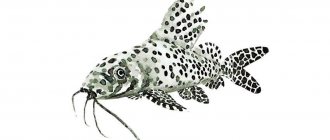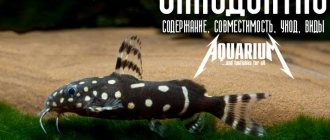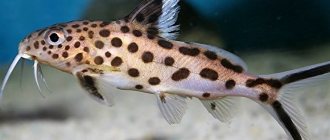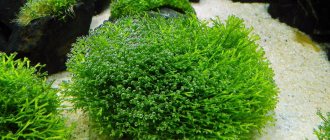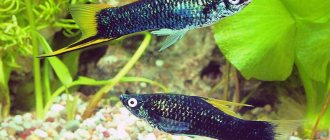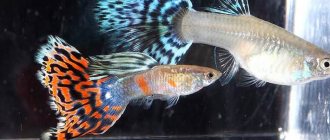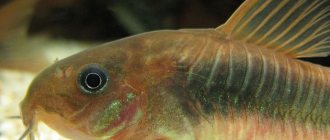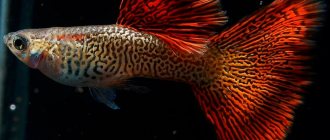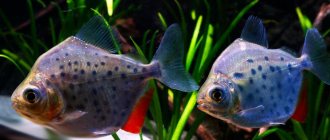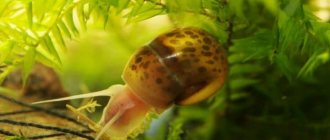SCIENTIFIC CLASSIFICATION: Kingdom: Animals; Type: Chordata; Class: Ray-finned fish; Squad: Catfish; Family: Cirrus catfish; Genus: Synodonts; Scientific name: Synodontis (Cuvier, 1816); Also known as: Pinnate catfish;
Minimum aquarium volume: from 100 l; Temperature: 25 - 28 C; Acidity: 6.5 - 8.0 pH; Filtration is good with moderate water flow, weekly 25% water changes, good aeration; Difficulty of keeping: suitable for a beginner aquarist; Behavior: Peaceful; Maximum size: up to 26 - 30 cm; Life expectancy: up to 15 years;
Habitat of synodontis
The fish live in the reservoirs of Central, Eastern and Western Africa, in the basins of the Congo, Niger, Nile, Zambezi, Ivindo rivers, lakes Chad, Malawi, Tanganyika, Victoria, Tana, Rukwa. The genus Synodonts includes 131 species. Synodontis were brought to Europe in 1950. Today, fish come mainly from three regions: West Africa (mainly Nigeria), Zaire (“Congo”) and rift lakes.
Description of synodontis
Synodontis has a squamous body, flat below and on the sides. The fish's head is large, the lower mouth is equipped with three pairs of whiskers. There are sharp spines on the dorsal and pectoral fins, their injections are painful. The color of synodontis depends on the species and can be light yellow, brown, gray-beige and other colors. The entire body except the abdomen is covered with dark spots.
Catfish synodontis photo
In an aquarium, fish perform the function of “orderlies”. Synodontis clean the aquarium from various algal growths, and also collect organic debris that clogs the bottom. Catfish live in schools. During the day they hide in all kinds of shelters, and at night they swim in search of food. Keep this in mind when purchasing, like many catfish-like fish, synodontis prefer a crepuscular lifestyle.
We recommend our video review about catfish
Origin history and appearance
These fish got into aquariums about 70 years ago. They were brought from Africa. The natural home of species including the shifter catfish is the freshwater lake Tanganyika, as well as the waters of the Congo River.
Experts classified catfish as catfishes, their suborder being catfishes from the fish family Mohawkidae. Another official name is fringed. The name cirrus catfish is also accepted.
One spiny dorsal fin, the second on the chest, as well as three characteristic pairs of whiskers adapted for searching for food indicate their relationship with the order Catfish. Due to the absence of the hard scales usual for this order, the synodontis fish is also called naked catfish.
The coloration of synodontis is varied, different for each species. What is common to all is the presence of pronounced spots. The female is approximately 4-5 cm larger than the male.
Conditions for keeping synodontis
Catfish synodontis photo
To keep these catfish, medium-sized aquariums of 150 - 200 liters with various shelters (snags, stones, etc.) are used. Plants are mainly broad-leaved, for example Echinodorus , Cryptocoryne . Small-leaved plants and fastidious plants are not suitable, as they need intense lighting, while synodontis, on the contrary, prefer moderate lighting. Recommended lamp power is 0.5 watts per liter (~50 Lm/l).
The soil is dark. When setting up an aquarium, you should provide for aeration and filtration of water. When keeping fish, good results are achieved by regularly replacing part of the water with fresher water.
Catfish synodontis photo
Synodontis can be kept with any peaceful species of fish of similar size. Many species get along well in African cichlids with Malawians and Tangas.
Reproduction is complex and requires injections of a gonadotropin drug.
Perhaps the most important thing in keeping any aquarium pet is the quality of the environment in which it lives. The aquarium should not contain excessive concentrations of nitrogenous compounds: ammonia/ammonium, nitrite and nitrate , as well as phosphates . To do this, it is extremely important to properly set up filtration and aeration . It is important to do timely water changes. Every conscientious aquarist should always have a set of drop tests on hand, at least for nitrate and phosphate. Fortunately, they have now become inexpensive, there are no problems with their assortment and acquisition. For example, we can with a clear conscience recommend you the cool UHE drop tests, , but they are sold only online. In stores in your city - offline, you can find inexpensive Vladox tests .
Catfish synodontis photo
Besides, you all know what kind of water flows from our taps. Chlorine-containing compounds, heavy metals and other delights of the water utility do not have the best effect on the health of the fish and the aquarium as a whole. The backlog of tap water does not particularly solve this problem. Therefore, when changing water, it is advisable to use conditioners that block these harmful substances. For example, Tetra AquaSafe - we discussed this drug in detail in this article . Here we will say briefly - it blocks chlorine compounds, heavy metals + contains B vitamins, iodine, magnesium, plant extracts. Those. With it, you can safely pour water into the aquarium without fear of harming your beloved pets.
Diseases
Synodontis are hardy fish with strong immunity. However, poor care and dirty water can undermine the health of any fish.
First of all, you need to monitor the condition of the water and the amount of nitrites/nitrates. An increase in this indicator negatively affects the condition of all pets, including catfish.
It is also recommended that you carefully monitor your pet's diet and portion sizes. Otherwise, regular overeating will lead to obesity and problems with the digestive tract. If your fish are already overweight, you should switch them to plant food and cut back on portions.
What to feed synodontis
Sinonontis, like many catfish, are not picky in their gastronomic preferences. In nature, they eat everything that moves, died, or simply got into their mouth =) They eat insects, their larvae, as well as plant foods.
In aquarium conditions, you can use virtually any branded food for synodontis; if we talk about personal feeding, then Tetra Tablets TabiMin tablets for bottom fish are perfect.
It would not be amiss to note that when purchasing any dry food, you should first of all pay attention to the date of its manufacture and shelf life, try not to buy food in bulk, and also store the food in a closed state - this will help to avoid the development of pathogenic flora in it .
CUCKOO CATFISH OR SYNODONTIS MULTISPOTTED
Synodontis species - cuckoo catfish
Habitat: Rift lakes (Lake Tanganyika); Content difficulties: easy; Water parameters in the aquarium: t0 23 - 28 C; pH 7.0–8.0; dH up to 20; Life expectancy: up to 10 years; Aquarium size: at least 80L with plenty of hiding places; Body length: up to 15cm; Behavior: peaceful; Diet: omnivorous.
One of the most famous species of synodontis. This beauty comes from Lake Tanganyika in Africa. The fish has a strong, stocky, slightly elongated and laterally flattened body. The head is formed by a lower mouth with 3 pairs of antennae and large eyes. The dorsal fin of Synodontis multispotted is triangular in shape and relatively small in size, and the fat fin is quite large. The back of the fins is colored light blue. The caudal fin is distinguished by highly developed blades, which are decorated with a black edging. Synodontis multispotted has a light yellow color with numerous black spots. Males are distinguished by brighter colors and a higher dorsal fin. It has a peaceful character, but it is not recommended to keep it with small fish. Gets along well with larger fish, African cichlids. Young individuals exhibit a gregarious nature; later they begin to show preference for their own territory. Under natural conditions, the cuckoo catfish feeds exclusively on snails. However, snails are not at all necessary in an aquarium, since the fish get used to high-quality dry food well. This type of fish received its second name because of its spawning method. Synodontis multispotted lays its eggs at the exact moment when another species of fish, such as cichlids, takes its eggs into its mouth for incubation. Catfish eggs are mixed with cichlid eggs and hatched by the other parents. Foundling fry grow together with young cichlids and sometimes feed on them.
SYNODONTIS NIGRIVENTRIS (DAVID, 1936)
Some types
Modern scientists count 10 genera of the catfish family and more than 150 species, among them:
- flag synodontis,
- synodontis angel,
- synodontis changeling
- Gambian synodontis
- synodontis veilata and many others.
Some of them are very attractive, have bright, spectacular colors and are memorable for their unusual behavior. For example, the cuckoo catfish (Synodontis multispotted) is very popular among amateur aquarists who breed Tanganyika cichlids.
It turns out that this species of catfish, the “cuckoo,” which matures by the age of 2, is distinguished by a reproduction pattern reminiscent of the cuckoo in Russian forests. During the spawning season, the female “cuckoo” catfish rushes around the spawning cichlids and tries to “throw” eggs at them unnoticed. And cichlids carry the offspring of multispotted catfish in their mouths, as if they were their own. But most species are reluctant to reproduce in captivity, so they are artificially stimulated with hormones to activate the process of egg laying. Within a week, the fry begin to feed on their own, but grow very slowly—small catfish mature within two years.
CATFISH CATFISH
Type of synodontis - catfish changeling
Habitat: Zaire; Content difficulties: easy; Water parameters in the aquarium: t 24 - 27 C; pH 6.8 – 7.0; dH 10; Life expectancy: up to 10 years; Aquarium size: at least 50 l. 2-3 times more is better; Body length: males - up to 6 cm, females - up to 10 cm; Behavior: peaceful; Diet: omnivorous.
The body color of the fish is brown with small dark spots. The body is stocky, somewhat flattened on the sides. The back is more convex than the abdomen, the eyes are large, the mouth is lower with three pairs of antennae, the caudal fin is two-lobed. The dorsal fin is triangular in shape and has a powerful first ray. Large adipose fin. Individuals of this species spend a significant part of their time with their belly up. This feature gave rise to the name Synodontis nigriventris catfish-shifters. In their natural habitat, skinwalkers swim in large schools of thousands of individuals. Therefore, it is recommended to purchase at least three fish. This will allow you to observe the natural group behavior of the skinwalkers.
SYNODONTIS GAMBIENSIS GAMBIAN SYNODONTIS
Habitat: Western Africa; Content difficulties: easy; Body length: up to 30cm; Behavior: may be aggressive; Diet: omnivorous.
Fish of this variety are easy to identify by their monotonous gray color. The ventral side of the body and antennae are whitish. There are several vague dark stripes on the caudal fin.
SYNODONTIS OCELLIFER
OCULATE SYNODONTIS
Type of synodontis - ocellated
Habitat: Western Africa; Content difficulties: easy; Body length: up to 50 cm; Life expectancy: up to 20 years; Behavior: peaceful; Diet: omnivorous.
The color of this variety of synodontis is light gray, sometimes with a yellowish coating. The body is covered with large, round, black spots. In adults, a white mark may appear in the center of each dark spot. On the back of the fish there is a large fin with sharp spines, so it is not recommended to transport the fish in bags, but use glass or plastic containers for this. Beautiful appearance and ease of maintenance have become the key to the popularity of ocellated synodontis.
SYNODONTIS EUPTERUS
SYNODONTIS EUPTERUSE OR VEIL
Type of synodontis - veil
Habitat: Western Africa; Content difficulties: easy; Life expectancy: more than 15 years; Body length: up to 20 cm; Behavior: peaceful; Diet: omnivorous.
The body of adult fish is gray with a yellow or purple tint and covered with small spots; in juveniles it is covered with winding stripes. The dorsal fin already looks veiled in juveniles. As the fish matures, the growth of the fins accelerates due to the lengthening of the soft rays and the membrane surrounding them. It is because of this feature that this species was nicknamed veiled synodontis (from English: Featherfin squeaker - squeaker with feather-like fins). The name comes from the Greek word "Syno", meaning "close" and "odontis", meaning "tooth" - referring to the teeth of the lower jaw of the fish, located close to each other. The second attribute in the name "Eupterus", which means "Beautiful Wings" in Greek, refers to its dorsal fin. Synodontis eupterus is a hardy fish and can adapt to a variety of conditions, making it ideal for beginner aquarists. Fish can often be observed in an upside-down position under overhanging rocks or snags.
SYNODONTIS ANGELICUS (SCHILTHUIS, 1891)
Sex differences
Beginning aquarists often wonder how to determine the sex of fish. The main gender differences are presented in the table.
| Males | Females |
| Thinner body, pointed genital papillae, reaching 3-4 mm in length. | Fuller body, presence of genital rounded papillae. |
It is known that the sex of individuals is usually determined after they become sexually mature. Most often this happens when they turn two years old.
SYNODONTIS ANGEL, STELLAR SYNODONTIS
Synodontis species - angel, star-shaped
Habitat: Zaire; Content difficulties: average; Water parameters in the aquarium: t 26 - 28 C; pH 6.5 – 6.8; dH 2 - 4; Life expectancy: up to 15 years; Aquarium size: at least 150l; Body length: up to 25cm; Behavior: due to the high territoriality of adults, clashes with neighbors may occur; Diet: omnivorous.
Photos of this fish have been published in many books and magazines. The price for this type of catfish reached 200-300 dollars per piece. Currently, their number has increased, and the price has fallen. Wild representatives of stellate synodontis are black with numerous white spots. Several color variations of this species are known. Some individuals have yellow and blue spots. Instead of spots, winding stripes may appear. From time to time, fish appear in the population whose background color is brown. Synodontis angel is a quiet, peace-loving fish that is very active at night, but can leave its shelter during the day. They should not be kept with small fish, because... they may mistake them for food. Star catfish love to burrow in the ground, so it is necessary to use a fine-grained substrate. Vegetation must have a strong root system.
SYNODONTIS CONTRACTUS (VINCIGUERRA, 1928)
Compatibility with other fish
Synodontis should not be housed with small fish (neons, zebrafish, guppies, etc.), as they will eat them. It is not recommended to live with other bottom dwellers: bocia, ancistrus catfish, corydoras, thoracatum.
Synodontis live well with African cichlids: Aulonocara, Melanochromis, Haplochromis.
SYNODONTIS CONTRAST
Habitat: Zaire; Content difficulties: easy; Water parameters in the aquarium: t 22 - 28 C; pH 6.5 – 7.0; dH 3 - 12; Life expectancy: up to 15 years; Body length: up to 10 cm; Behavior: peaceful; Diet: omnivorous.
One of the smallest representatives of synodontis. It is similar in appearance to the shapeshifter Synodontis nigriventris. Individuals are beige-gray with dark coffee spots alternating with light dots. The first ray of the dorsal and pectoral fins and tail are streaked with brown. Mouth with a noticeably convex sucker. Calm, peaceful fish, love the movement of water, during the day they often stay in shelters and are most active at dusk. At night they dig in the ground and can dig up plants. They do not like bright light and need shelter. As with Synodontis nigriventris, these catfish are upside down most of the time and swim in schools. In nature, Synodontis contractus is an active algae eater, as a result of which the diet must contain plant components.
SYNODONTIS DECORUS (BOULENGER, 1899)
Feeding
Omnivorous, feeds on insect larvae, algae, fry and any other food that it can find in nature. In an aquarium, feeding him is not a problem at all.
They will eagerly eat any food you offer them. Although they prefer to hide in shelters during the day, the smell of food will lure any synodontis.
Live, frozen, tablet food, everything suits him. Shrimp meat and bloodworms (both live and frozen) and even small worms are his favorite food.
SYNODONTIS FLAG
Synodontis species - flag
Habitat: Zaire; Content difficulties: easy; Water parameters in the aquarium: t 23 - 28 C; pH 6.5 – 7.5; dH up to 20; Life expectancy: up to 15 years; Aquarium size: at least 100 liters with plenty of hiding places; Body length: up to 30cm; Behavior: peaceful; Diet: omnivorous.
Synodontis flagalis is one of the most beautiful representatives of the genus of synodonts. This catfish moves gracefully, wagging its long black dorsal fin. The young specimens (5-6 cm) coming for sale are very beautiful, but this is only a hint of their future beauty, which blossoms as they grow older. Flag synodontis has a stocky, elongated and slightly laterally compressed body. There are spines on the dorsal and lateral fins. Big eyes. Lower mouth with 3 pairs of whiskers. The adipose fin is large. Okra - large black spots scattered on a light background with a silver tint. The back is brownish. The abdomen is light. The head of Synodontis is dotted with small black specks. The main decoration of the fish is the thread-like elongated first ray of the dorsal fin (with age, a braid appears on it) and a neat lyre of the tail. Sexual differences: the male is brighter, slimmer and smaller than the female. Flag synodontis is a very calm, peaceful and schooling fish. It should not be kept in the same aquarium with small fish, as well as with fish that have an open wound on their body (synodontis can eat away this place). Flag synodontis must be kept away from fish that love to feast on other people's fins. The long extension of the dorsal fin is a primary target not only for cichlids.
SYNODONTIS NOTATUS (VAILLANT, 1893)
How to set up a catfish for reproduction?
How important is it for the striped platidora species to maintain it during the spawning period? It is safe to say that the success of the whole business depends on him. Before spawning, the selected individuals (it is better to select two or three males for one female) should:
- quality and regular feeding;
- lower the water temperature to 17-18o;
- equip the lighting in such a way that a single beam of light penetrates one small slot and no more.
We suggest you read: How to remove fleas from a cat using folk remedies. Folk remedies for flea protection in cats
Platydoras striped breeding is special and interesting. The female transfers milk taken from the male to the selected area and lays the first batch of eggs on top of it. Subsequently, layers of milk and caviar alternate with enviable accuracy. This ensures high-quality fertilization of eggs, even those located in low layers.
Everyone loves catfish in aquariums
They are interesting to watch and attract their attention. But for this they must be cheerful and cheerful, and this depends on compliance with the rules of care and maintaining optimal conditions for their life
There are many fish that can be successfully bred at home, but striped platydorus is not one of them. These catfish are propagated for sale using hormonal injections, but naturally, even in large aquariums, this happens very rarely. There is very little information on this process, since most often with successful spawning, breeders found the fry already swimming.
For spawning, it is necessary to prepare a separate aquarium in which temperature (270), acidity (up to 7 pH), hardness (up to 60) and water level (20 cm) are controlled. Floating plants are also launched
In addition, before spawning, it is important to keep the spawners separately and feed them with live food. The nest must be built from leaves by the male.
The female lays approximately three hundred eggs. But to carry out spawning it is necessary to use a pituitary suspension. After this process, the producers are evicted. The incubation period is 72 hours. On the fifth day, the larvae begin to swim. The young are fed live dust and microworms. Growth takes a long time.
ONE-SPOTTED OR BLUE SYNODONTIS
Type of synodontis - gray
Habitat: Zaire; Content difficulties: easy; Water parameters in the aquarium: t 22 - 25 C; pH 6.5 – 7.5; dH 8 - 18; Life expectancy: up to 15 years; Aquarium size: at least 150L with plenty of hiding places; Body length: up to 25 cm; Behavior: may be aggressive; Diet: omnivorous.
Gray or single-spotted synodontis has a very attractive appearance. Its body and head are gray-brown in color, and its abdomen is white. There are from one to five round, black spots along the body along the midline. The number of spots on each side of the body may not be the same. There are individuals with spots on only one side or absent altogether. Young single-spotted synodontis are quite sociable and peaceful, but with age, aggression and territorial behavior appears both towards their own species and towards other synodontis. Best kept with large fish, such as West African cichlids.
SYNODONTIS NJASSAE (KEILHACK, 1908)
Social behavior
Synodontis veilata is not aggressive, but it cannot be called peaceful either; it poses a threat to small fish, so prefer individuals of a similar size as neighbors. Trouble can also be caused to slow-moving fish; Synodontis is able to quickly eat a large amount of food at a time, thereby leaving other inhabitants of the aquarium hungry. This species has a complex hierarchy system directly related to the size of the fish - the largest individual gets the best shelter, driving others to the periphery. In addition, this is one of the few species that is an excellent addition to African cichlids.
